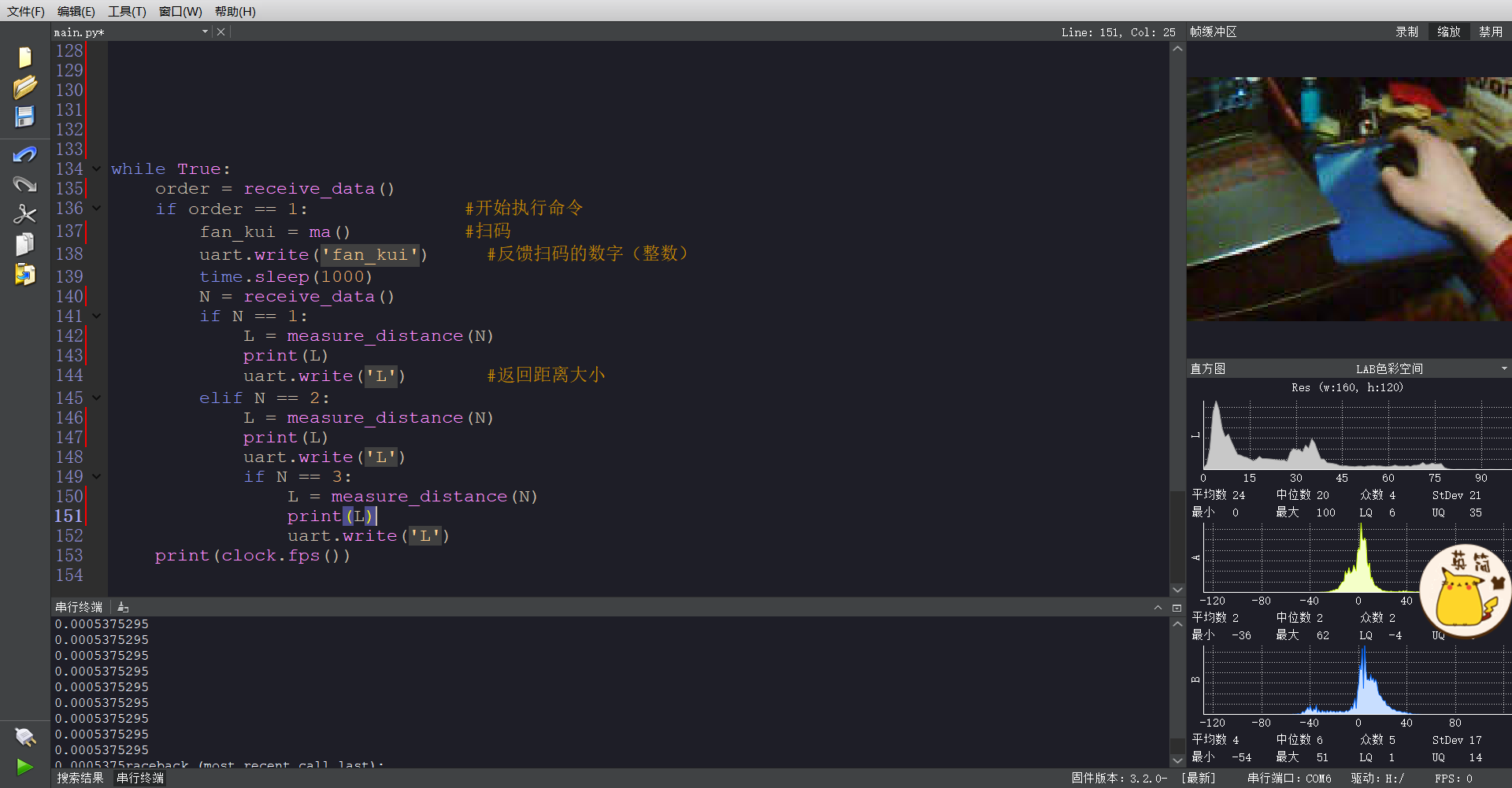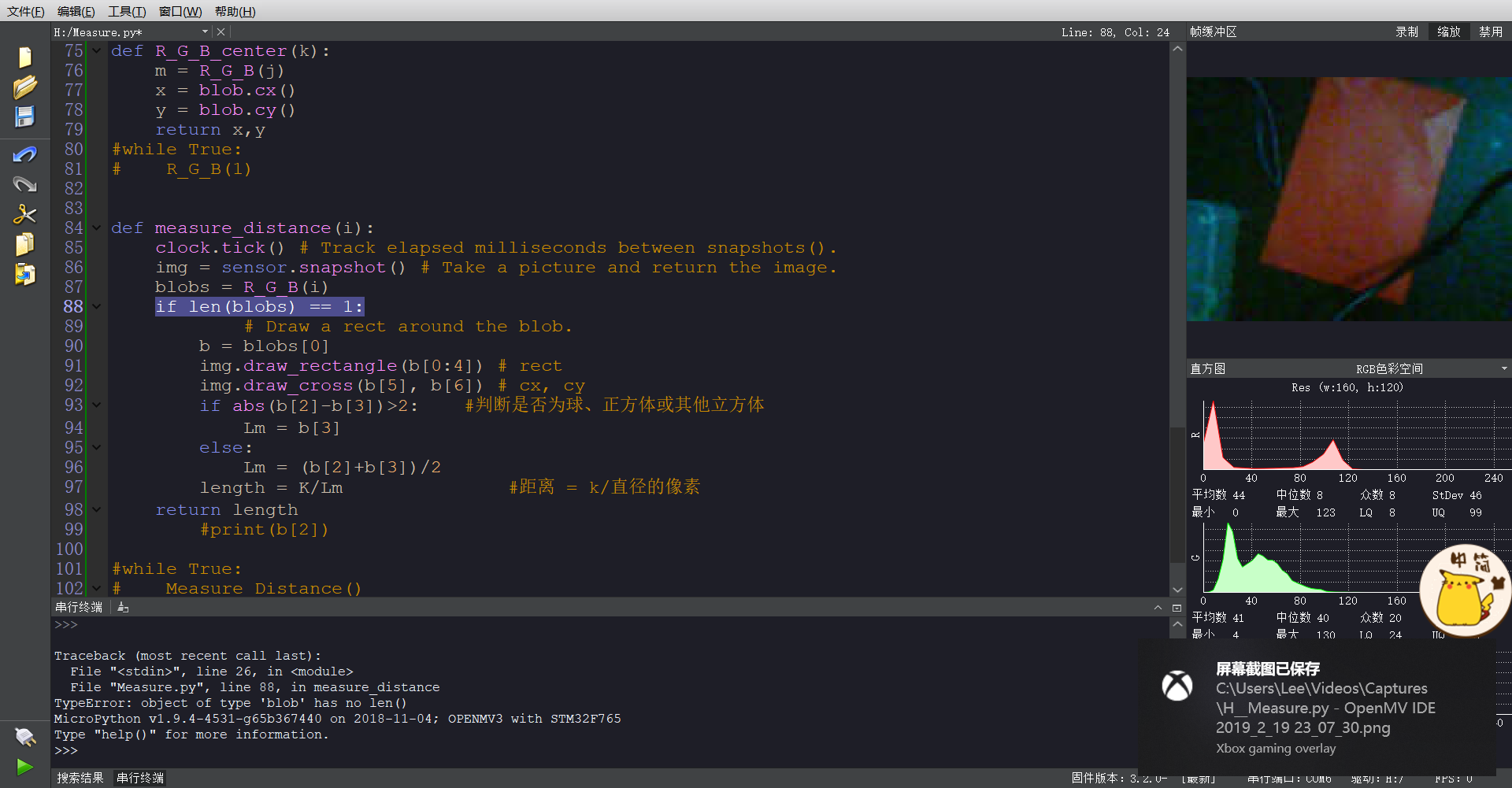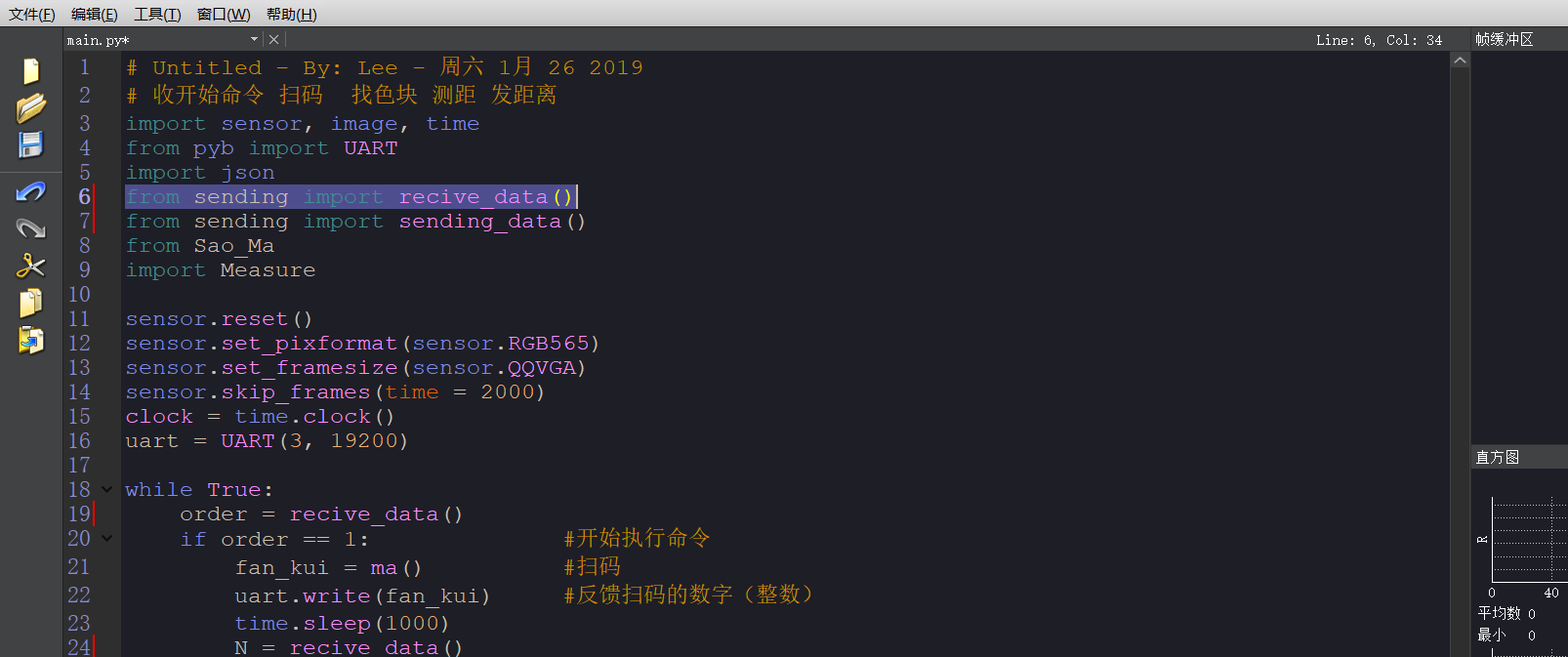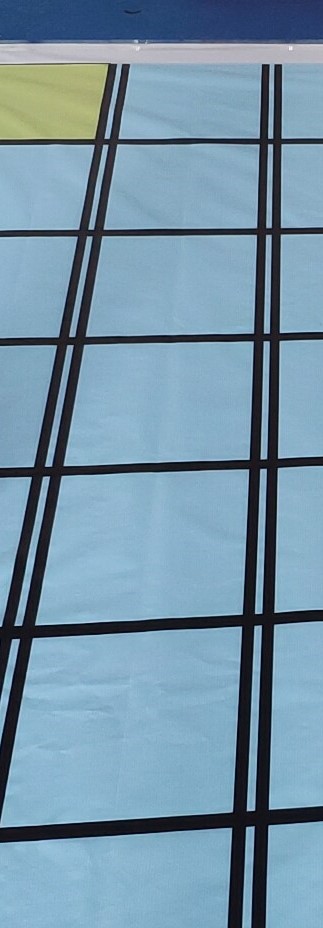1.单独运行各个模块没有提示语法错误,但编译main.py时提示我的R_G_B方法名字定义出错
2.编译时编译器提示将我的sending模块更新,如果更了之后,又会变回以前错的那样(我编译时都选不更新才会照着新写得模块遍历

 )
)
Measure.py
# Untitled - By: 李俊健 - 周四 1月 24 2019
#按扫码数字顺序进行红绿蓝颜色识别
# Single Color RGB565 Blob Tracking Example
#
# This example shows off single color RGB565 tracking using the OpenMV Cam.
import sensor,image,math,time
import sending
import r_g_b
threshold_index = 0 # 0 for red, 1 for green, 2 for blue
# Color Tracking Thresholds (L Min, L Max, A Min, A Max, B Min, B Max)
# The below thresholds track in general red/green/blue things. You may wish to tune them...
thresholds = [(30, 100, 15, 127, 15, 127), # generic_red_thresholds #只有红色
(30, 100, -64, -8, -32, 32), # generic_green_thresholds #只有绿色
(0, 30, 0, 64, -128, 0)] # generic_blue_thresholds #只有蓝色
#接收32的命令,1-找红色物料,2-找—绿色物料,3-找蓝色物料,并返回距离
#while (True):
# View_Color()
# Measure the distance
#
# This example shows off how to measure the distance through the size in imgage
# This example in particular looks for yellow pingpong ball.
# For color tracking to work really well you should ideally be in a very, very,
# very, controlled enviroment where the lighting is constant...
#yellow_threshold = ( 56, 83, 5, 57, 63, 80)
# You may need to tweak the above settings for tracking green things...
# Select an area in the Framebuffer to copy the color settings.
sensor.reset() # Initialize the camera sensor.
sensor.set_pixformat(sensor.RGB565) # use RGB565.
sensor.set_framesize(sensor.QQVGA) # use QQVGA for speed.
sensor.skip_frames(10) # Let new settings take affect.
sensor.set_auto_whitebal(False) # turn this off.
clock = time.clock() # Tracks FPS.
m = sending.receive_data()
K=500 #the value should be measured 需根据要识别物体来确定初始化比例大小
#实际大小=K*宽的像素
def measure_distance(m):
clock.tick() # Track elapsed milliseconds between snapshots().
img = sensor.snapshot() # Take a picture and return the image.
blobs = r_g_b.R_G_B(m)
if len(blobs) == 1:
# Draw a rect around the blob.
b = blobs[0]
img.draw_rectangle(b[0:4]) # rect
img.draw_cross(b[5], b[6]) # cx, cy
if abs(b[2]-b[3])>2: #判断是否为球、正方体或其他立方体
Lm = b[3]
else:
Lm = (b[2]+b[3])/2
length = K/Lm #距离 = k/直径的像素
return length
#print(b[2])
#while True:
# Measure_Distance()
#print(clock.fps()) # Note: Your OpenMV Cam runs about half as fast while
# connected to your computer. The FPS should increase once disconnected.
main.py
# Untitled - By: Lee - 周六 1月 26 2019
# 收开始命令 扫码 找色块 测距 发距离
import sensor, image, time
from pyb import UART
import json
from sending import receive_data
from sending import sending_data
import Sao_Ma
import Measure
sensor.reset()
sensor.set_pixformat(sensor.RGB565)
sensor.set_framesize(sensor.QQVGA)
sensor.skip_frames(time = 2000)
clock = time.clock()
uart = UART(3, 19200)
while True:
order = receive_data()
if order == 1: #开始执行命令
fan_kui = Sao_Ma.ma() #扫码
uart.write('fan_kui') #反馈扫码的数字(整数)
time.sleep(1000)
N = receive_data()
if N == 1:
L = Measure.measure_distance(N)
uart.write('L') #返回距离大小
elif N == 2:
L = Measure.measure_distance(N)
uart.write('L')
if N == 3:
L = Measure.measure_distance(N)
uart.write('L')
print(clock.fps())
r_g_b.py
# Untitled - By: 李俊健 - 周四 1月 24 2019
#按扫码数字顺序进行红绿蓝颜色识别
# Single Color RGB565 Blob Tracking Example
#
# This example shows off single color RGB565 tracking using the OpenMV Cam.
import sensor, image, time
threshold_index = 0 # 0 for red, 1 for green, 2 for blue
# Color Tracking Thresholds (L Min, L Max, A Min, A Max, B Min, B Max)
# The below thresholds track in general red/green/blue things. You may wish to tune them...
thresholds = [(30, 100, 15, 127, 15, 127), # generic_red_thresholds
(30, 100, -64, -8, -32, 32), # generic_green_thresholds
(0, 30, 0, 64, -128, 0)] # generic_blue_thresholds
sensor.reset()
sensor.set_pixformat(sensor.RGB565)
sensor.set_framesize(sensor.QVGA)
sensor.skip_frames(time = 2000)
sensor.set_auto_gain(False) # must be turned off for color tracking
sensor.set_auto_whitebal(False) # must be turned off for color tracking
clock = time.clock()
# Only blobs that with more pixels than "pixel_threshold" and more area than "area_threshold" are
# returned by "find_blobs" below. Change "pixels_threshold" and "area_threshold" if you change the
# camera resolution. "merge=True" merges all overlapping blobs in the image.
#分别给i赋值1,2,3
def R_G_B(j): #寻找最大色块的坐标
if j <= 3:
max_size=0
clock.tick()
img = sensor.snapshot()
for blob in img.find_blobs([thresholds[j-1]], pixels_threshold=200, \
area_threshold=200, merge=True):
#色块中心的坐标
if blob.pixels() > max_size:
max_blob = blob
max_size = blob.pixels()
img.draw_rectangle(blob.rect())
img.draw_cross(blob.cx(), blob.cy())
print('sum :', len(blobs))
print(clock.fps())
return max_blob
def R_G_B_center(k):
m = R_G_B(j)
x = blob.cx()
y = blob.cy()
return x,y
#while True:
# R_G_B(1)
Sao_Ma.py
import sensor, image,time
sensor.reset()
sensor.set_pixformat(sensor.RGB565)
sensor.set_framesize(sensor.QQVGA) # can be QVGA on M7...
sensor.skip_frames(30)
sensor.set_auto_gain(False) # must turn this off to prevent image washout...
clock = time.clock()
def ma():
clock.tick()
img = sensor.snapshot()
img.lens_corr(1.8) # strength of 1.8 is good for the 2.8mm lens.
for code in img.find_qrcodes():
img.draw_rectangle(code.rect(),color = (0,0,0))
numbers = code.payload()
if code.payload() >= '0':
numbers = list(map(int, numbers))
number = numbers[0]*100+numbers[1]*10+numbers[2]
return nunmer
#print(number)
break
#while (True):
print(ma())
sending.py
# Untitled - By: Lee - 周日 2月 3 2019
import time
from pyb import UART
uart = UART(3, 115200)
uart.init(115200, bits=8, parity=None, stop=1) # init with given parameters
def sending_data(jj):
global uart
j = jj
uart.write('j') #反馈字符串
def receive_data():
global uart
if uart.any():
tmp_data = uart.readline()
uart.write("RECIVED : %s\n"%tmp_data)
print(tmp_data)
return tmp_data
else:
return 1
#while(True):
# sending_data(1)
# receive_data()
# time.sleep(1000)







 )
)
